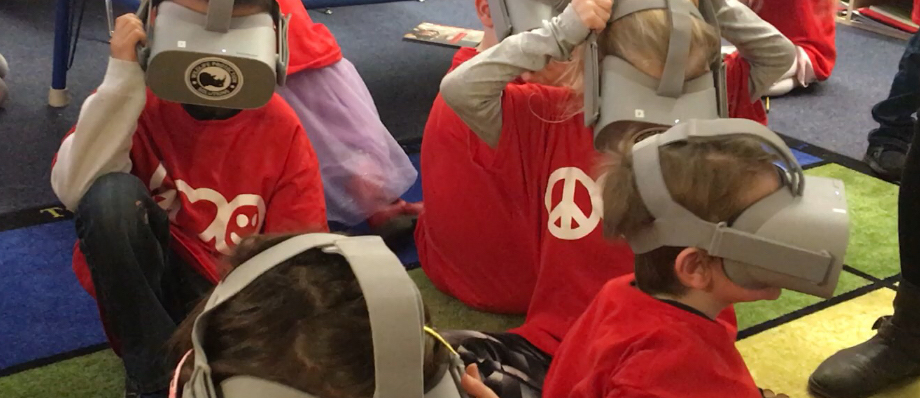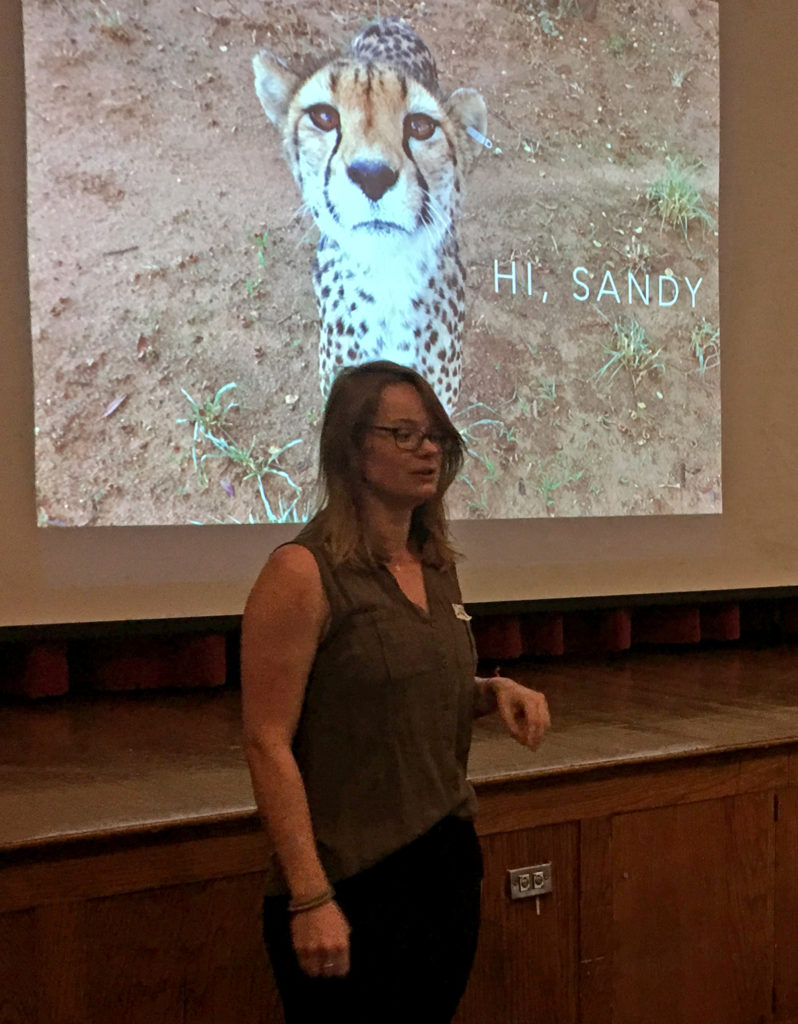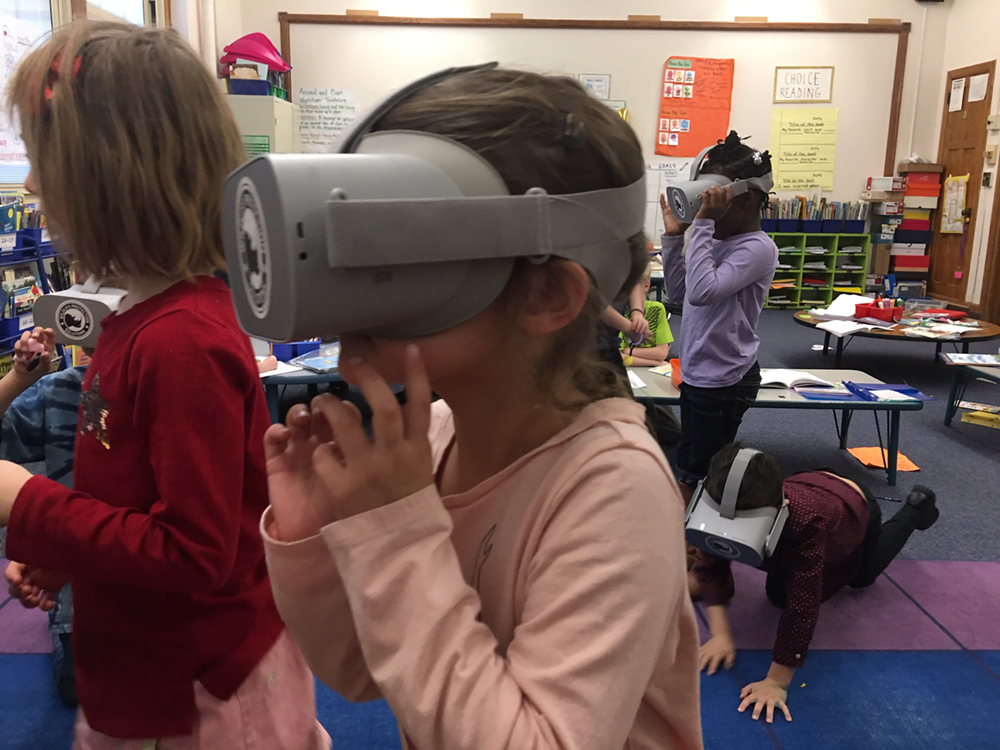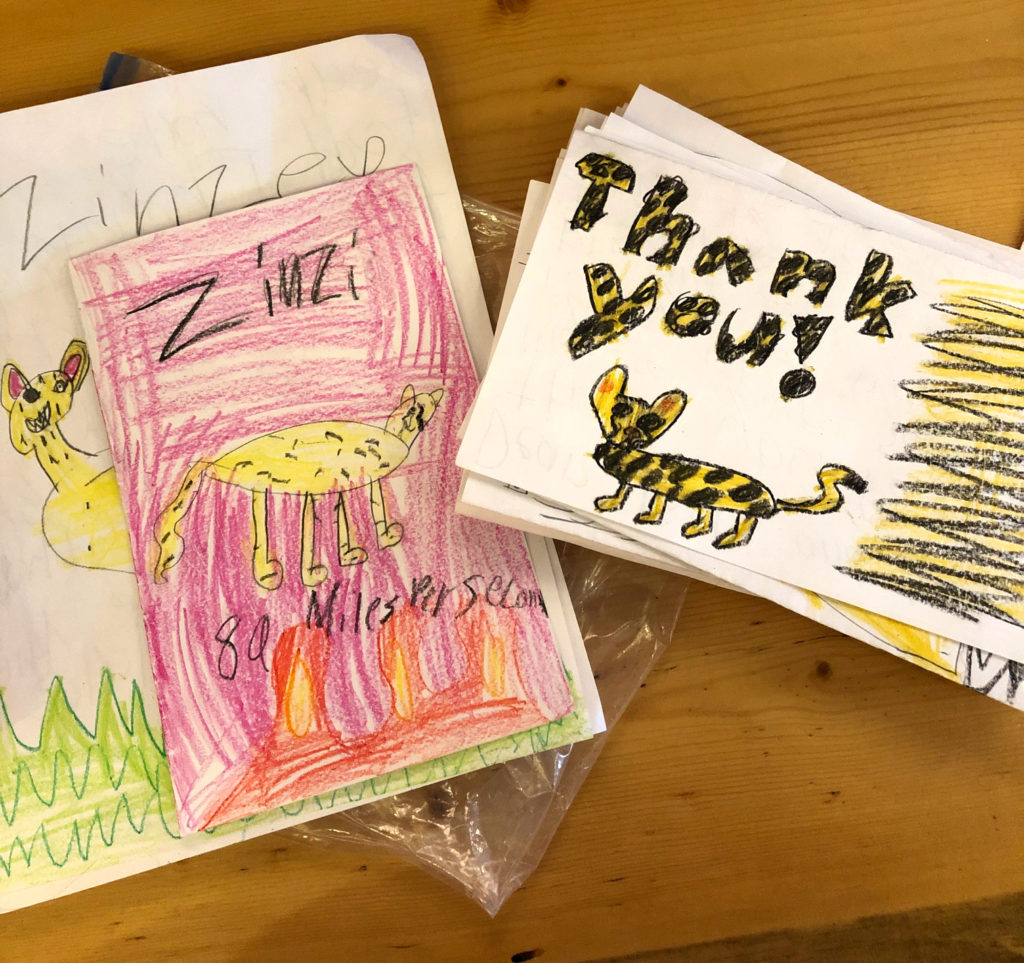
Kids love animal stories, and first grade students at Edison Elementary School in Denver, Colorado are no exception. Last week Wildlife Protection Solutions (WPS) joined with Global Conservation Corps (GCC) to teach the children about wildlife conservation, and the kinds of animals the two organizations help protect in Africa, including rhino, elephant, and leopard.
Kate Vannelli of GCC captivated the approximately 100 children with photos, videos, and stories about her work with cheetahs in Namibia. She also explained how radio collars and camera traps help scientists understand the behavior of these cats and other wild animals.
“Do you think cheetahs purr or roar?” Vannelli asked the kids. “Big cats can do one or the other but not both.”

Hands shot up in the room, with half the kids guessing “purr” and the other half, “roar.” Vannelli clicked on a video of a cheetah and cranked up the speakers. The unmistakable sounds of a purring cat filled the room.
“This is Sandy,” she said. “And just like your cats at home, she purrs when she’s happy and relaxed.”
After the presentation, Todd Lehman and Julie West of WPS took small groups of kids on a virtual safari in Africa, using 3D Virtual reality headsets to give them close-up views of elephants, rhinos, lions, meerkats, monkeys, and other animals in their native habitats. The experience of wearing a headset was new for most of the children, and their enthusiasm was palpable.

“Lions are right in front of me!” one student exclaimed.
“What’s happening?!” shouted another. “A rhino is about to walk over my body!”
Some of the kids excitedly crawled on the classroom floor as if they were animals. Others reached out their arms to touch the animals, or cringed and gasped as if they were near.
“Can I have another turn?” one student asked with a grin.
Virtual reality is an educational, fun way for WPS to introduce wildlife conservation to people of all ages. Whether experienced in an elementary classroom, museum exhibit, or community event, the immersive footage sparks an interest in animals that WPS hopes will inspire a new generation of wildlife stewards.

Article by Julie West, Communications Coordinator, Wildlife Protection Solutions

